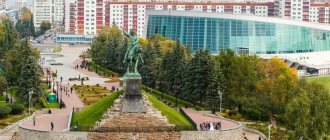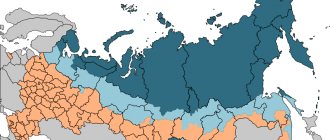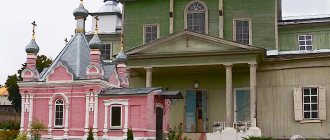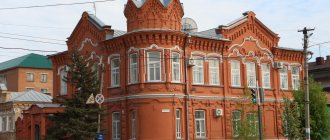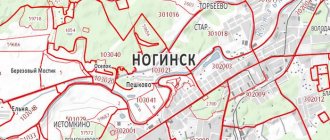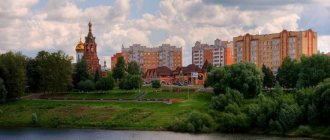Yanaul - the northern gate of Bashkiria
Yanaul is the northern gate of Bashkiria, the northernmost city of the Republic. Today, the installation of the northern gate, decorated with national ornaments, can be seen at the railway station at the entrance to the city.
City `s history
The city of Yanaul grew out of the village. In 1795, a large settlement with 30 households and 173 inhabitants was formed on this site. These places have long attracted different peoples due to their important strategic location. Three deep rivers flow in these places: Shudek, Bui (a large tributary of the Kama) and Yanaulka. The population of the region has always been multinational; Tartars, Bashkirs, Russians, Udmurts, and Maris now live here.
The first important stage in the history of the city dates back to the 19th century, when Yanaul became a volost center.
The next important stage in the development of Yanaul was the construction of a railway that connected two large industrial centers: Yekaterinburg and Kazan.
Construction took place from 1909 to 1914. Yanaul became a railway station of the same name. During these same years, a station was built here, a temple was opened, and a new round of development appeared in the village, connected with the Gorky Railway. It should be noted that even today the station building is impressive; a modern three-story rear building welcomes city guests.
Alley near Yanaul railway station
During the Civil War, both Reds and Whites arrived here by rail. And in 1919, the station was liberated by the legendary 27th Iron Division under the command of the red commander, hero of the Civil War Voldemar Martinovich Azin.
In honor of him, today the central street in the city is named, on which the rear administration of the city is located, and from which a beautiful park immersed in greenery and, a little further, a modern pedestrian zone lead towards the railway station.
Fountain in Yanaul
But let's return to the history of the city. After the Great Patriotic War, the Yanaul station became a hub, and a depot was opened here.
In the 60s of the twentieth century, the oil and gas industry developed in the Yanaul region. Oil workers come here. The village is growing.
Since 1991, Yanaul has acquired the status of a city of republican subordination.
Square in Yanaul
Yanaul creates the impression of a hospitable city that wants to share its history with city guests. There is a local history museum in Yanaul; on the pedestrian zone near the station there is an open-air exhibition telling about the main stages of the development of the railway station. There is a modern hotel in the city near the station, and there are cafes in the center.
Square in Yanaul
Coordinates: 56°16'14″N 54°55'56″E
Author: Nadezhda Shurenkova Photo: Sergey Suvorov
Read also about Yanaul and its attractions: Attractions of Yanaul: Karmanovskoye Reservoir Bui River - the left tributary of the Kama
Order now!
Your ad could be here!
https://nashural.ru Your advertisement will be seen by thousands of people a day
Interesting? Tell your friends!
Yanaul
The names of some settlements have very controversial origins. The name of the city Yanaul was no exception. There are perhaps as many versions of the origin of this name as there are specialists studying the history of the city. According to one version, the word “yanaul” comes from “yanay avyl” (in Tatar “new village”). Previously, the name was pronounced as Yanaevo, and even earlier – Yunai. In turn, the word “Yunai” could come from the Tatar or Bashkir clan of Yeney. Despite the fact that Yanaul is a relatively small settlement and few people know it in Russia, this city has a very ancient and rich history. Yanaul arose in the 16th-17th centuries. However, he began his history not from the city, but from a small village. In Russian documents from the 1770s, the village of Yanaul is called Novaya. The local population called their village Yanaul, so the settlement went down in history under this name. The first mention of the village can be found in documentation from 1750. By the end of the 18th century, the village had at least thirty houses, in which about two hundred people lived.
Representatives of various nationalities lived peacefully in Yanaul. Tatars, Bashkirs, Mari, and Udmurts lived here. Belonging to different nationalities did not prevent the village residents from uniting to actively participate in Pugachev’s performances in 1774-1775. In 1795, the village counted 173 souls of both sexes living in 30 households. During the Patriotic War of 1812, peoples fought together against Napoleonic army, defending their common homeland.
Until 1866, the territory on which Yanaul is located belonged to the Urman-Gorey and Uran volosts. Then the boundaries of the volosts were revised. As a result, the Kyzylyar and Yanaul volosts appeared. Yanaul becomes the center of the latter. And there were several such stages in the history of the city.
In the “List of Populated Places of the Ufa Province” for 1870, Yanaul is listed as the village of Yenaulova (Yanaulova) of the Birsky district near the Arkache (Arkash) river. The village had 80 households and 459 residents of both sexes - 235 males and 224 females. Indicated: mosque, school, water mill, forestry. According to the “Complete List of Populated Places of the Ufa Province” for 1896, Yanaul is listed as the village of Yenaul, Baiguzinsky volost, Birsky district. The village had 84 households and 517 residents of both sexes - 264 males and 253 females. The mosque is indicated.
From 1909 to 1914, active construction of the railway took place in the south of Russia. In Bashkiria, a railway line was built connecting Yekaterinburg and Kazan. The road passed just between the villages of Ivanaevo and Yanaul. A station called “Yanaul” was built here. A small station village arose near the station, in which houses for railway workers and a water pumping station were built. The first train passed through the Yanaul station only in 1916. Local residents organized a celebration in honor of such a significant event. The construction of the railway changed the way of life of the residents of the surrounding villages.
At the beginning of the twentieth century, Yanaul turned out to be one of the epicenters of the civil war. The railroad attracted hostile forces. During the NEP, construction of warehouses, workshops, cooperatives and residential buildings began near the station. The station village gradually grew and in 1922 received the name Red October. According to 1920 data, there were 11 households of the Russian population, the number of residents was 110 people - 57 men, 53 women. In Yanaul during this period there were 105 households, with 685 residents. In 1938, Yanaul, Ivanaevo and the station village merged into a workers' village, called Yanaul.
Residents of Yanaul took part in the fight against the Nazi invaders. 3 Yanaul residents even received the title of Hero of the Soviet Union. In 1964, an Oil Refining Department (NPU) was opened in the village of Krasny Kholm near Yanaul, which moved to Yanaul in 1965. From this moment the history of the modern city began. Thanks to the efforts of the oil workers, Yanaul has been significantly transformed. New houses, cultural, social and domestic facilities were built.
In 1991, Yanaul became a city of republican subordination, home to about thirty thousand people. Local residents call their city the northern gate of Bashkortostan. Yanaul became the birthplace of many famous scientists, military men, doctors, artists and poets.
Administrative and municipal status[edit]
As part of the administrative divisions, Yanaul serves as the administrative center of the Yanaul District, [4] even though it is not part of it. [1] As an administrative division, it is included separately as the city of republican significance of Yanaul
- an administrative unit with a status equal to that of districts.
[1] As a municipal division, the city of republican significance of Yanaul is included in the Yanaulsky municipal district in the Yanaul urban settlement
. [5]
Yanaul city (Bashkiria)
Yanaul - administrative] Yanaul district[/anchor] of the Republic of Bashkortostan. The population of the city is 27,020 people. (2021). The area of the city is 26 km². Three rivers flow through the city territory - Shudek, Bui (a tributary of the Kama) and Yanaulka. From Yanaul to Moscow - 1323 km, from Ufa - 209, Neftekamsk - 44, Votkinsk - 191, Tchaikovsky - 154, Osa - 249, Birsk - 130. The railway connecting Moscow with Kazan and Yekaterinburg passes through the city.
Archaeologists have discovered the remains of ancient settlements in the vicinity of Yanaul. Household items, animal bones and weapons were found here. People lived in these places more than 26 centuries ago.
The name of the city comes from the Bashkir Yanauyl: “yany” - new, “auyl” - village. The first written mention of the village of Yanaul was in 1750. Mostly Bashkirs lived here, who were engaged in agriculture, cattle breeding and beekeeping. Until the 1770s the village in Russian-language sources was called “Novaya”, but since the local population called it “Yanaul”, it remained in history as “Yanaevo”.
According to the census in 1795, the population was 173 people. at 30 households, 1859 - 461 people. at 85 yards. Until 1866, the territory was part of the Uran and Urman-Garey volosts of the Osinskaya road. After the reform, the territory was divided into Kyzylyar and Yanaul volosts - Yanaul became the volost center.
In 1912-1916. The Kazan-Ekaterinburg railway is being built, which runs between Yanaul and the neighboring village of Ivanaevo. In 1916, the Yanaul railway station opened.
During the Civil War, battles took place near the railway station. In 1919, the station was occupied by the legendary 27th Iron Division under the command of the commander of the hero of the Civil War, Voldemar Azin. During the NEP period, workshops and warehouses, buildings of industrial artels and cooperatives were erected around the station - the workers' village of Krasny Oktyabr appeared. In 1938, the villages of Yanaul, Ivanaevo and the village of Krasny Oktyabr were united into one working village of Yanaul.
During the Great Patriotic War, a flight school was based in the Yanaul region - an airfield and a military hospital were equipped. In October 1941, the Moscow Military Financial School was evacuated to Yanaul. After the opening of the railway depot, Yanaul became a junction station. A brick factory was built. In 1941-1945. 10,940 Yanaul residents went to the front, 7,359 combatants survived, three were awarded the title of Hero of the Soviet Union - V. G. Loskutov, G. Kh. Khaidershin and M. I. Imametdinov.
The discovery of oil in these places in 1964 gave impetus to the industrial development of Yanaul. NGDU "Krasnokholmskneft" (today a branch of OJSC "Bashneft" "Bashneft-Yanaul") has become the city-forming one. NGDU Krasnokholmskneft (today a branch of OJSC Bashneft, Bashneft-Yanaul) has become a city-forming enterprise.
Significant financial and human resources were involved in oil production. Construction departments emerged in Yanaul, and construction of multi-storey housing began. In Yanaul, the following enterprises appeared: Yanaul Elevator, Yanaul Butter and Cheese Plant, Yanaul Fruit and Vegetable Cannery, Meat Processing Plant, etc. The population grew to 25 thousand people. In 1991, Yanaul received the status of a city of republican significance.
In the post-perestroika years, once prosperous enterprises disappeared in Yanaul - a brick and canning factory, a butter and cheese plant and a bakery. In the 21st century Agricultural processing enterprises are being built in the city - the Michurinsky Pig Farm, a feed mill, etc. The Yanaul Permanent Formwork Plant was built, and work was underway to lay the foundation of a metallurgical plant. The largest modern enterprises are the Arlanneft oil and gas production department, Avangard Nefteservis, a company specializing in the production of equipment for oil wells, and a permanent formwork plant.
The nature of these places is diverse. In the city and its surroundings you can see such rare birds as white-backed woodpeckers, corncrakes, ibises, magpies or scoters. In the surrounding area there are encounters with wild boars, moose and brown bears. Wood grouse, foxes, beavers, lynxes and wolves live nearby.
Yanaul
Yanaul is a city with a rich historical past. Its roots stretch back to the distant 16th – 17th centuries. True, it arose as a small village, but large rivers also begin with a small stream. It is difficult today to restore the past to the smallest detail - for this you still need to sit in archives and conduct research. But what we know today is enough to be proud of our native land. The village of Yanaul before the 1770s. in Russian-language sources it was called “Novaya”, but since the local population called it “Yanaul”, it remained in history as “Yanaevo”. The name “Yanaul” was first mentioned in documents in 1750. In 1795 there were 30 houses and 173 people lived here. In 1920, 685 people lived in 105 houses. The Tatar, Mari, Bashkir, Udmurt peoples living in these lands actively participated in the Pugachev uprising of 1774-1775 and beat the French during the Patriotic War of 1812. Until 1866, the territory of the district was part of the Uran and Urman-Garey volosts of the Osinskaya road. When the volosts were reorganized, the territory was divided into Kyzylyar and Yanaul volosts - Yanaul became a volost center for the first time. There are several such important stages in its history. In 1909 – 1914 The Kazan-Ekaterinburg railway was built. “Chugunka” passed between the villages of Ivanaevo (Imanaevo, Yubanaevo) and Yanaul, located only one mile from each other. A station opened here and it was called “Yanaul”. A station building, a water pump, and several houses (barracks) for railway workers were built at the station. The first train passed through it, according to old-timers, in 1916. This became a big event. The opening of the station gave a new direction to the life of the village. Yanaul was not spared by the Civil War either. Both Reds and Whites were attracted by the railroad. In 1919, the station was liberated by the legendary 27th Iron Division under the command of the red commander, hero of the Civil War Voldemar Martinovich Azin. During the NEP years, cooperatives, industrial workshops, warehouses, and residential buildings for railway workers were built around the station, and a village arose, which in 1922 became known as the village of Krasny Oktyabr. And in 1938, the villages of Ivanaevo, Yanaul and the village of Krasny Oktyabr were reunited into one settlement, which received the status of a workers' village called Yanaul.
Having survived the Great Patriotic War (three of our fellow countrymen were awarded the title of Hero of the Soviet Union), Yanaul grew stronger, enterprises and auxiliary units at the station began to operate, a depot opened - Yanaul became a junction railway station. And in 1964, in the village of Krasny Kholm, now located in the Kaltasinsky district, the Oil Refining Department (NPU) "Krasnokholmskneft" was opened on the basis of oil field No. 1 of the NGDU "Arlanneft". In 1965, the NPU moved to the village of Yanaul - and this became a new chapter in the history of Yanaul. Today NGDU Krasnokholmskneft is one of the leading oil and gas production departments of the Republic of Bashkortostan. Oil workers built many residential buildings, social, cultural, household and industrial facilities in the village.
Since 1991, Yanaul has been a city of republican subordination, home to more than 27 thousand people. A small, but so dear, clean and green city, which gave the country famous writers, poets, singers, artists, scientists, doctors, military men, athletes, oil workers and workers. Our Yanaul is the Northern Gate of Bashkortostan.
